I have the following PHP application. That publishes a user signUp to a message queue. The Java Application reads from that queue and imports it. Hopefully the diagram below will discribe it. I am only working with the Java side of things. The json messages exists on the queue already.
Route (Java Consuming Side).
@Component
public class SignUpRouting {
errorHandler(deadLetterChannel("rabbitmq://signUpDeadLetter.exchange?username=etc..").useOriginalMessage());
from("rabbitmq://phpSignUp.exchange?username=etc....")
.routeId("signUpRoute")
.processRef("signUpProcessor")
.end();
//....
The processor..
@Component
public class SignupProcessor implements Processor {
private ObjectMapper mapper = new ObjectMapper();
@Override
public void process(Exchange exchange) throws Exception {
String json = exchange.getIn().getBody(String.class);
SignUpDto dto = mapper.readValue(json, SignUpDto.class);
SignUp signUp = new SignUp();
signUp.setWhatever(dto.getWhatever());
//etc....
// save record
signUpDao.save(signUp);
}
}
My question is this.. What should I do I do when the Processor fails to import the message.
Lets say for example there was a DAO exception. A data field may have been toolong or the import was in the incorrect format. I dont want to lose the message. I would like to see the error and retry the import. But I would not want to keep retrying the message every 30 seconds.
I am thinking that I would need to create another queue.. A dead letter queue and have that indefinately retry the message every 6 hours?.. I would then view the logs see the error and upload a fix and the message would be reprocessed?
How would I implement that? Or am I on the wrong track?
EDIT I have tried setting deadLetterExchange to see if would get things on the right direction... However it errors and says queue cannot be non null
rabbitmq://phpSignUp.exchange?username=etc...&deadLetterExchange=signUpDeadLetter.exchange
